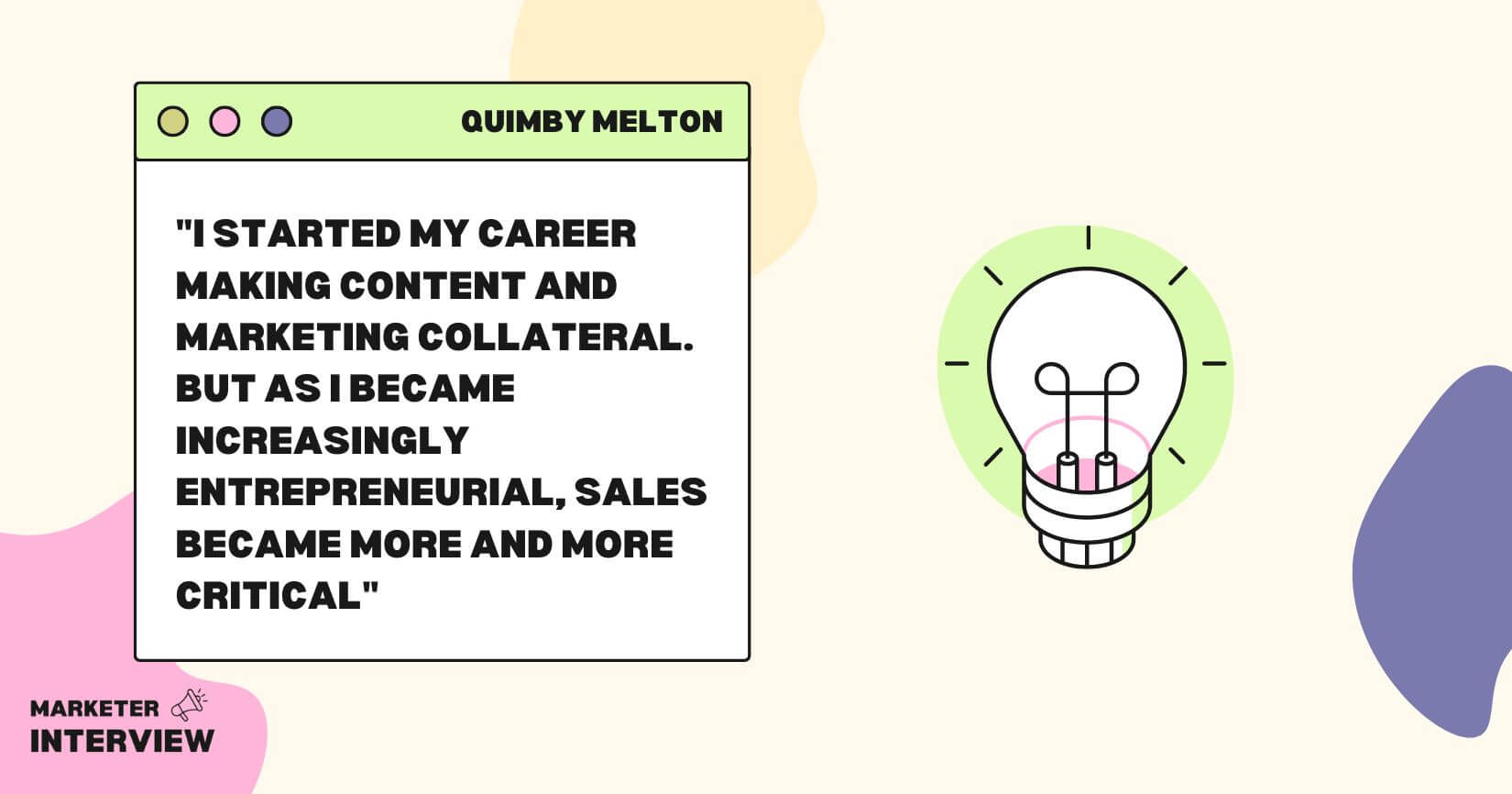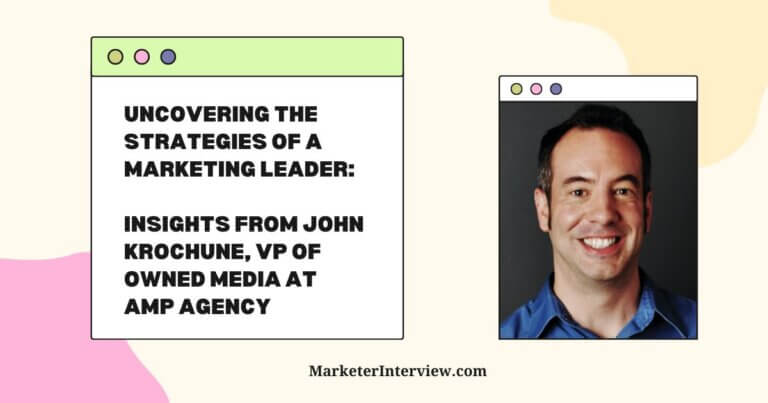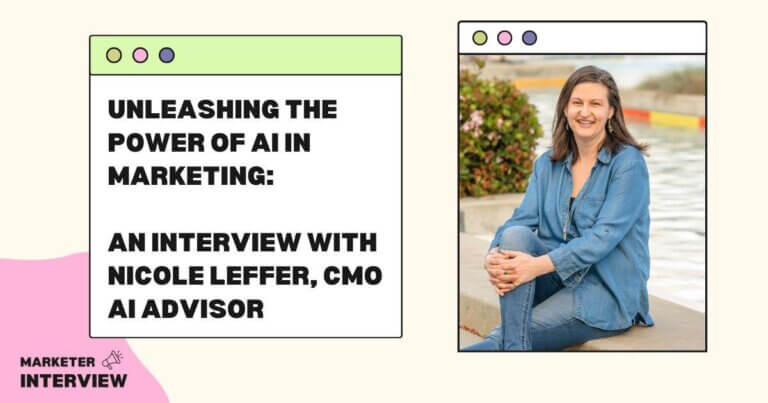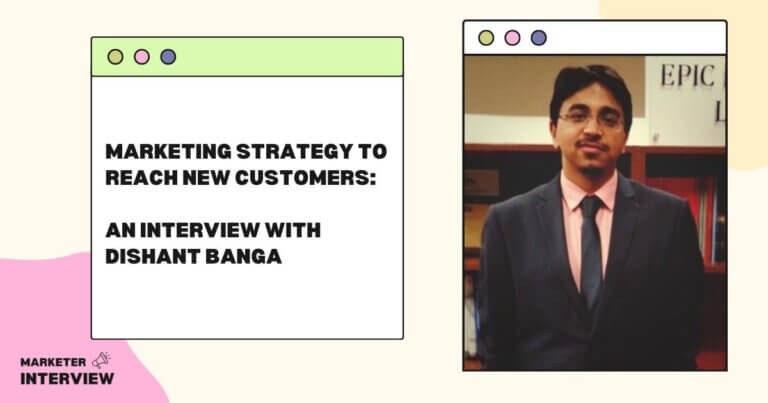The Science of Marketing Operations: An Interview with Quimby Melton
Welcome to another insightful interview on Marketer Interview!
Today, we have the pleasure of speaking with Quimby Melton, the Co-founder and CEO of Confection.
With a diverse professional background in literary studies, media production, project management, marketing ops, technology development, customer acquisition, and data analytics, Quimby brings a unique perspective to the marketing world.
Join us as we look into Quimby’s journey, career insights, and expertise in marketing operations.
Contents
- 1 Can you share your journey into the marketing world and how your diverse professional background has shaped your approach?
- 2 As a co-founder and CEO, what are your key responsibilities and challenges in marketing operations?
- 3 What exactly does marketing operations entail, and how does it differ from other marketing disciplines?
- 4 How do you leverage your literary studies and media production background to enhance your marketing strategies?
- 5 What role does technology development play in the realm of marketing ops, and how has it transformed the marketing landscape?
- 6 Data analytics is a crucial component of marketing operations. Could you explain how you integrate data-driven insights into your marketing campaigns?
- 7 What are some of the most effective customer acquisition strategies you’ve implemented in your career?
- 8 Could you give us an example of a challenging marketing project you undertook and how you overcame obstacles to achieve success?
- 9 In your experience, which tools and software have proven invaluable for your role in marketing operations?
Over the past 15 years, I’ve moved from the top of the funnel to the bottom.
I started my career making content and marketing collateral. But as I became increasingly entrepreneurial, sales became more and more critical. This pushed me further and further down the funnel to the point that now, I spend most of my time at the very bottom.
This journey has allowed me to work at all funnel stages, and this holistic experience is invaluable for planning and executing practical business development efforts. Unifying metrics along all key pipeline stages – from first-touch awareness to the sales process – is very empowering (and I enjoy doing it).
This evolution has made me a sales-oriented B2B marketer, and I’m grateful for that perspective and mindset. There tends to be a certain amount of tension or (worse) disconnect between sales and marketing teams.
I see only bridges and loops binding them together.

As a co-founder and CEO, what are your key responsibilities and challenges in marketing operations?
Tools like Seamless, Apollo, and LinkedIn Sales Navigator make generating B2B leads quick and inexpensive. In a matter of minutes and for < $100/mo, we can generate lists that contain thousands of qualified business professionals.
We must ask ourselves, “In this reality, what role do B2B marketing and sales teams play? What are our core responsibilities and challenges? Where should we spend most of our time?”
Liberated from the traditional, onerous demands of constant lead gen, marketing and sales teams are now free to focus their collective energies on four critical tasks:
- Persona definition and development (“Who are we trying to reach?”)
- Messaging development (“What words and value props will resonate with these personas?”)
- Systems engineering (“What processes do we use to evaluate leads, drive meetings, uncover opportunities, and close deals?”)
- Data analysis (“Looking at the results of all our efforts, what adjustments do we need to make to personas, messages, and systems to improve ROI?”)
Making these four elements work harmoniously ensures that leads who enter the top of our funnels move through constructive, results-oriented, well-defined nurturing processes and toward positive revenue outcomes.
At Confection, I spend most of my time wrestling with messaging. Our most crucial limiting agent is ignorance, and I want to ensure I deliver high-quality information to our prospective customers. This way, they can decide how we best fit into their stacks (if at all). Even if someone doesn’t become our customer, I want them to walk away from an encounter with us enlightened, eager to take control of their digital marketing data, and oriented toward data independence.
In my consulting life, I mostly see teams struggling with data analysis – signal fidelity and creating actionable insights – and systems engineering. Operationalizing and calibrating sales and marketing teams and workflows is not easy. But the impact and outcomes are enormous once we get a client’s process dialed in. People are happier. They meet goals. Businesses thrive. I enjoy this part of my professional life quite a bit.
I want to live in a world of value-creating, positive-sum entrepreneurs. This is one of the ways I work toward that goal.
What exactly does marketing operations entail, and how does it differ from other marketing disciplines?
Marketing operations is, in essence, plumbing. It’s our job to ensure critical pipes are connected and working. Specifically, the marketing operations team:
- Builds, maintains, and increases the efficiency of processes that businesses use to evaluate leads, drive meetings, uncover opportunities, and close deals
- Ensures there’s a well-trod bridge between marketing and sales (especially concerning lead dispensation and handoff)
- Makes sure front-line intel flows up from the sales team to marketing and that supporting assets, personas, and messaging flow down to sales from marketing
We want sales to depend (read: trust) on marketing for leads, messaging, and persona insights. And we want marketing to depend (again, read: trust) sales for actionable insights from the front line. This is how we bind the two worlds together.

How do you leverage your literary studies and media production background to enhance your marketing strategies?
There really is very little difference between the business world and the world of the humanities.
These days, we think of higher ed in narrow professional tracks. That is, one enters college and immediately begins preparing to become a doctor, accountant, or teacher.
Historically, it was all liberal arts (at least, at the undergraduate level), and studying history, art, and literature produced capable professionals in all professional disciplines.
So what do the humanities and effective business pros have in common:
A taste for mischief and a risk appetite; an eye for detail; cosmopolitan wit and some irreverent wile; broad cultural knowledge; critical thinking skills; the ability to communicate; a little applied mathematics in the form of finance and accounting; knowledge of human nature — these are all that matter in the business world. And humanities students have this knowledge in spades.
Marketers, specifically, are in a war with ignorance. And content – in the form of films, pamphlets, samizdat, essays, and so on – has always been the primary weapon of independence movements, revolutionaries, and warriors.
In this sense, content is everything to marketers. Ideas and ideals are distilled into content and distributed via various media expressions are more powerful than any weapon. They’re an essential cornerstone of any movement.
Shelley, the Romantic poet, has a line that I love. In his essay, “A Defense of Poetry,” he famously writes, “Poets are the unacknowledged legislators of the world.” Poetry is just a form of content, so we could rephrase this as “marketers are the unacknowledged legislators of the world.” It’s powerful stuff.
A contemporary poet named David Whyte says: “One line of poetry can change your life.” This is true. Poetry maximizes meaning in a minimum amount of space. Content marketing can do this. One line of messaging or product positioning can change your life.
Content marketing, like poetry, is an exciting thing indeed.
What role does technology development play in the realm of marketing ops, and how has it transformed the marketing landscape?
The most successful products and marketing efforts I’ve participated in have had a heavy product-led growth (PLG) component. This framework forces marketers to think like product developers and build products of their own often.
The marketing site is, of course, a product. The same is true of content assets like videos and whitepapers. However, lead gen tools, ROI calculators, and other interactive apps that illustrate product value or contribute to net new leads or user growth can be valuable growth drivers and communicators of brand value.
I’d encourage marketers – especially those in tech and SaaS – to think about ways to build marketing “products” that facilitate network effects and low-friction product experiences. Often, they’ll take longer to develop and be more expensive than content assets, but they’ll have more demonstrable and durable capital value.
Data analytics is a crucial component of marketing operations. Could you explain how you integrate data-driven insights into your marketing campaigns?
I’ve written a lot of long-form articles about this on LinkedIn. However, put as succinctly as possible, cross-domain signal fidelity is the critical challenge facing contemporary marketing teams. It impacts marketing decisions, platform and application performance, and asset valuations.
How do I move data around between systems? What usage rights do I have? How can I know the information I have is reliable? Everyone we speak with says, “Data visibility and accurate reporting, ad effectiveness, and marketing tools communicating with one another are core challenges. Can you help?”
Once you’ve taken control of your primary data sets and are operating independently, you can build more complex data-driven models and perform tasks like audience segmentation, retargeting, and analytics analysis. But downstream quality will always suffer until you fix your primary input challenge. Decisions made and strategies built on these imprecise data sets will suffer as well.
What are some of the most effective customer acquisition strategies you’ve implemented in your career?
Over-investing in organic, inbound SEO-oriented content always pays dividends for me. The trick is to work as follows:
- Find high-demand content topics with little or low-quality representation online
- Build conversion-oriented landing pages around this content. Make sure people have many, many opportunities to convert
- Make the content keyword dense, and add best-practice SEO elements to the pages
- Submit sitemaps to search engines
As search engines begin indexing and serving your content, leads will flow in time.
Could you give us an example of a challenging marketing project you undertook and how you overcame obstacles to achieve success?
If you’re a hammer, everything looks like a nail. However, marketing efforts are challenging 90% of the time because of a lack of data signal fidelity, poorly defined systems and processes, vague definitions of key terms, and insufficient KPI tracking.
When I inherit situations like this, I do the following in the following order:
- take control of primary digital marketing analytics data sets
- define key terms (e.g., “What’s the difference between a marketing-qualified lead and a sales-qualified lead?”)
- define critical processes and responsibilities (“e.g., “When a new lead enters the CRM, what happens to it?”)
- organize KPIs, so I have a holistic view of the way each funnel stage relates to the others
- ensure spending/input and performance/output ratios (between ads and leads, for example) are strong
I have a few free assets in this Google Drive folder that should help anyone start this process. Think of it as a marketing ops survival guide.
If you find yourself under pressure to cut waste or boost performance, if you need a way to report on your progress, if you find yourself on a team arguing about which color shades or brand elements or logo revisions are going to drive more sales – lean on these resources. They’ll help you get a handle on your pipeline, bring it under control, communicate and plan better, pacify your team, and lead everyone forward.
In your experience, which tools and software have proven invaluable for your role in marketing operations?
These days, my marketing stack is straightforward and very lean:
- Confection + BigQuery for primary (“atomic-level”) digital marketing data.
- HubSpot as a CRM for automation, organization, and outbound/inbound lead management.
- MailReach for cold email warming.
- Dripify for LinkedIn automation.
- Apollo for prospecting.
- Pantheon for website hosting.
The total monthly cost for this is < $800. And at both Confection and in my consulting life, they help us perform the four critical tasks outlined above:
- Persona definition and development
- Messaging development
- Systems engineering
- Data analysis






